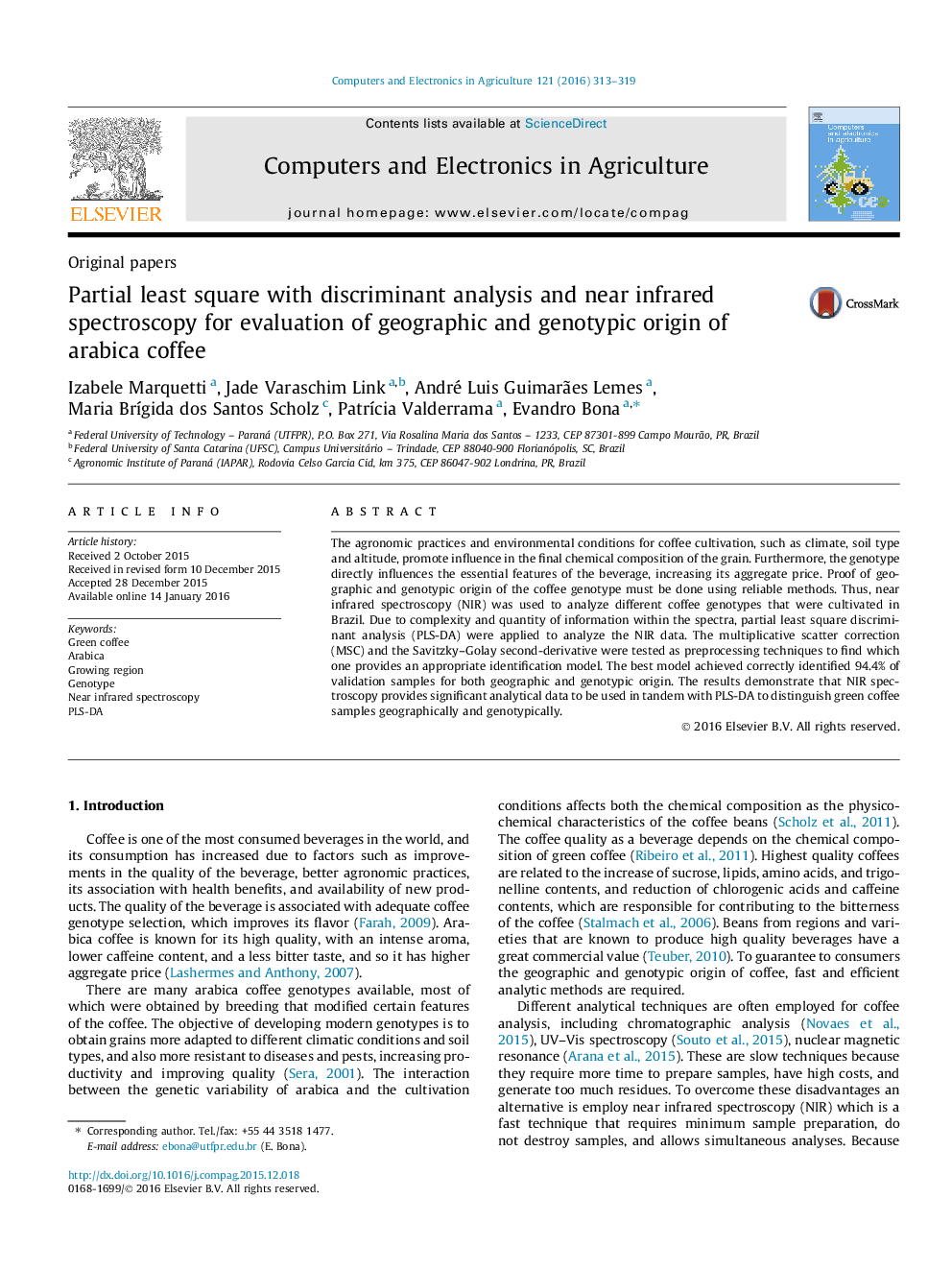| Article ID | Journal | Published Year | Pages | File Type |
|---|---|---|---|---|
| 84012 | Computers and Electronics in Agriculture | 2016 | 7 Pages |
•A fast and sample preparation free methodology was used to determine coffee origin.•PLS-DA model is successful to predict geographic and genotype origin.•NIR-PLS-DA is able to identify genotype that promotes better quality coffee.
The agronomic practices and environmental conditions for coffee cultivation, such as climate, soil type and altitude, promote influence in the final chemical composition of the grain. Furthermore, the genotype directly influences the essential features of the beverage, increasing its aggregate price. Proof of geographic and genotypic origin of the coffee genotype must be done using reliable methods. Thus, near infrared spectroscopy (NIR) was used to analyze different coffee genotypes that were cultivated in Brazil. Due to complexity and quantity of information within the spectra, partial least square discriminant analysis (PLS-DA) were applied to analyze the NIR data. The multiplicative scatter correction (MSC) and the Savitzky–Golay second-derivative were tested as preprocessing techniques to find which one provides an appropriate identification model. The best model achieved correctly identified 94.4% of validation samples for both geographic and genotypic origin. The results demonstrate that NIR spectroscopy provides significant analytical data to be used in tandem with PLS-DA to distinguish green coffee samples geographically and genotypically.
Graphical abstractFigure optionsDownload full-size imageDownload as PowerPoint slide
